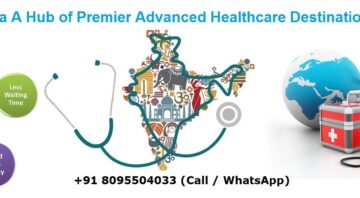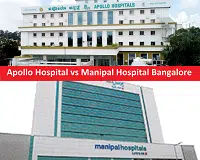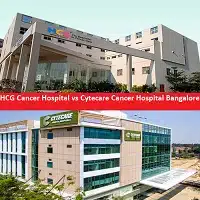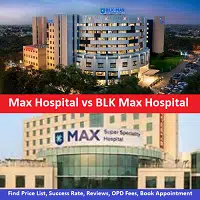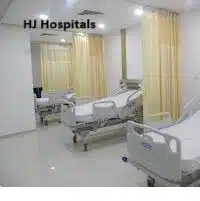
Vascular Surgery in Kenya
Are you suffering from vascular diseases and searching for vascular surgery in Kenya? In Kenya, early detection of vascular disease is essential for the right treatments before the disease develops severe enough to lead to complications, like a heart attack or stroke. Vascular surgeons help in cater prevention and screening through vascular surgery in Kenya. Unfortunately, Kenya lacks a complete health insurance policy; hence, medical care in Kenya is not available to all, mainly to the majority of the poor. The top vascular hospitals in Kenya provide inclusive and highly custom-made diagnostic facilities. Vascular surgery cost in Kenya is available at a reasonable price in Kenya.
The hospital health provider for vascular surgery in Kenya team helps you employ the best-trained specialist and provide compassionate care before, during, and after. Most vascular diseases in Kenya are avoidable with the control of risk issues, early findings, and quick management. Vascular surgery in Kenya helps control risk, particularly in vascular diseases. The vascular hospitals give high-quality treatment from dedicated and highly skilled vascular surgeons that can cure the most complex surgical procedures for diseases of the lymphatic system in leading hospitals at a low cost in Kenya.
The leading cause of the vascular disease is lifestyle habits such as inadequate food and exercise in Kenya. Therefore, more consideration is given to dietary habits changes, and regular screening for hypertension is required. If you are unsure about which vascular surgery treatment in Kenya is chosen and the estimation for comprehensive vascular surgery cost in Kenya, we are here to help you at expertchikitsa.com with the best treatment procedures at an affordable price.
Vascular Surgery Cost in Kenya
The vascular surgery cost in Kenya depends on the hospital location, type of surgery, patient’s medical condition, and the surgeon’s choice.
| Vascular Surgery in Kenya | Average Cost in USD | Average Cost in Kenya Shilling (KES) |
| Abdominal Aortic Aneurysm (AAA) Repair | $4,300 | Ksh 516,000 |
| Abdominal aortic aneurysm | $5,300 | Ksh 636,000 |
| Aneurysm Surgery | $4,500 | Ksh 540,000 |
| Angiography | $5,000 | Ksh 600,000 |
| Angioplasty | $5,200 | Ksh 624,000 |
| Carotid stenting | $4,800 | Ksh 576,000 |
| Stent Insertion | $6,500 | Ksh 780,000 |
| Varicose Vein Removal | $3,500 | Ksh 420,000 |
What is Vascular Surgery?
Vascular surgery is the surgical field that emphasizes the vascular system that includes blood vessels, or arteries, veins, and lymphatic circulation, large and small, in addition to the lymphatic system, which carries infection-fighting white blood cells in the body.
Who are Vascular Surgeons, and what Diseases do they Treat?
Vascular surgeons typically do not operate brain or heart procedures. Open surgery and endovascular techniques are used to cure vascular diseases. These doctors cure diseases and conditions in the vascular system, the network of arteries and veins that transport blood all over the body. They cure several different diseases, such as:
– Aneurysm: a protrusion or a weak patch in an artery.
-Atherosclerosis: The plaque collects up in the arteries and leads to choked blood flow.
-Carotid Artery Disease: Contraction of the arteries in the neck
-Deep Vein Thrombosis: This is a blood clot disease in a vein deep in the body, like in the leg.
-Peripheral artery disease: Constriction of the arteries in the arms or legs.
-Spider veins: small networks of veins in the innermost part of the skin.
-Injury to blood vessels due to injury.
-Varicose veins: Distended and twisted veins that give rise to pain in the legs.
Causes of Vascular Disease?
There are different reasons for vascular diseases, such as:
-High cholesterol
-High blood pressure
-Smoking or taking tobacco products
-Diabetes
-Hereditary
-Some medicines
-Injury
-Infection
-Blood clots
What are Vascular Diseases?
Some vascular diseases affect the arteries, whereas others happen in veins. There are many kinds of vascular diseases.
Types of peripheral arterial disease include:
Peripheral artery disease: A obstruction in your legs.
-Peripheral artery disease
-Intestinal ischemic syndrome
-Renal artery disease
-Popliteal Entrapment Syndrome
-Raynaud’s Phenomenon
-Buerger’s Disease
Carotid artery issues: There are two major carotid arteries in the neck.
-Carotid artery disease
-Artery dissection of the carotid
-Body tumors of the carotid
-Carotid artery aneurysm
Venous disease: Symptoms are heaviness, pain, inflammation, throbbing, or itching. Blood clots can form in the body.
-Varicose veins
-Spider veins
-Klippel-Trenaunay syndrome (KTS)
-May-Thurner syndrome (MTS)
-Thoracic outlet syndrome (TOS)
-Chronic venous insufficiency (CVI)
Blood clots: Blood clots in the arteries may raise the complication of stroke, heart attack, acute leg pain, problem walking, or sometimes the loss of a limb.
-Hypercoagulable situations or blood clotting conditions:
-Deep vein thrombosis (DVT)
-Pulmonary embolism
-Axillo-subclavian vein thrombosis, known as Paget-Schroetter Syndrome
-Superficial thrombophlebitis
Aortic aneurysm: An aneurysm is an uncommon swell in a blood vessel wall.
-Thoracic aortic aneurysm.
-Abdominal aortic aneurysm.
Fibromuscular dysplasia (FMD): A rare medical disorder where people have abnormal cellular development in the walls of their medium and large arteries.
Lymphedema: Lymphedema, an irregular fluid accumulation, grows when lymph vessels or lymph nodes are absent, weakened, injured, or eliminated.
Primary (rare) and Secondary lymphedema
Vasculitis: Bulging blood vessels due to medicine, an infection, or an unknown reason.
Symptoms of Vascular Disease
Check out the symptoms of vascular disease including:
-Pain in the arms and hands.
-Unusual color changes in the fingertips.
-Ulcers or injuries that do not cure quickly.
-Hand pain due to cold temperatures or locations.
-Numbness or stinging sensation in the fingertips.
-Inflammation
-Fingers and hands get cold.
What are the Kinds of Vascular Disease Testing in Kenya?
Several vascular diseases include clots or obstructions in blood vessels. To identify these, your vascular surgeons must view the inside of the blood vessels using imaging processes. Check out the vascular tests that comprise:
-Angiogram
-Ankle-brachial index (ABI test)
-Carotid duplex
-Computed tomography angiography (CTA) and magnetic resonance angiography (MRA)
-Duplex ultrasound
Kinds of Vascular Surgery in Kenya
Do you know the different kinds of vascular surgery in Kenya?
-Abdominal Aortic Aneurysm (AAA) Repair: Abbreviated as AAA. An aneurysm is a swelling, weak patch in the aorta that may be at risk of breaking. In this condition, the aneurysm is in the portion of the aorta that is in the abdomen. Restoration of an AAA may be carried out in one of two ways. Firstly, open repair, where the doctor makes a significant cut in the abdomen to view the aorta, and secondly, endovascular aneurysm repair (EVAR), where this process is a minimally invasive technique. Abdominal aortic aneurysm (AAA) repair cost in Kenya is Ksh 516,000($4,300).
-Triple-A or Abdominal aortic aneurysm: An abdominal aortic aneurysm (AAA) or called AAA, or triple-A is a weak part of the main artery that transports blood to the lower body producing a bulge or swells. Aortic aneurysms can rupture if not treated early and may cause life-threatening internal bleeding. Old-aged people and long-term smokers are particularly at high risk for abdominal aortic aneurysms. Abdominal aortic aneurysm surgery price in Kenya is Ksh 636,000 and $5,300.
-Aneurysm Surgery: Aneurysm surgery cures aortic aneurysms. A surgeon cuts off the damaged area of the aorta and changes it with a synthetic material tube known as a graft. The surgery is very successful when done before an aneurysm rupture. Recovery happens in five to 10 days at the hospital and four to six weeks at home. Aneurysm surgery cost in Kenya is Ksh 540,000 while $4,500.
-Angiography3: Angiography or arteriography is a typical medical technique used to see blood flow in the lumen, blood vessels, and body organs, with a specific interest in the arteries, veins, and heart chambers. It may be essential to detect several medical conditions. In addition, angiography treats obstructions and other irregularities, particularly those that affect the heart and brain. There are different kinds of angiography, such as coronary angiography, cerebral angiography, and microangiography. Angiography cost in Kenya is Ksh 600,000 and $5,000.
-Angioplasty: Also referred to as percutaneous transluminal coronary angioplasty (PTCA) or percutaneous coronary intervention (PCI), angioplasty is a less invasive surgical method used to open blocked blood vessels (arteries) that flow to the heart. Angioplasty price in Kenya is Ksh 624,000 and $5,200.
-Carotid stenting: Carotid angioplasty (Kuh-ROT-id AN-jee-o-plas-tee) and stenting are techniques that open blocked arteries to rebuild blood flow to the brain. They’re mostly done to cure or prevent strokes. In carotid angioplasty is mainly combined with another process known as stenting. During the angioplasty technique, a carotid stent (a tiny, metal mesh tube) is put inside the carotid artery at the site of the obstruction and supports holding the artery open. Carotid stenting cost in Kenya is Ksh 576,000, whereas $4,800.
-Stent Insertion: A stent is a wire mesh stainless steel tube that keeps an artery exposed and from closing again. It forms a permanent part of your artery. Stents are tube-shaped instruments that permanently stay on the inner side of the artery. They appeared to be small fishing nets made of metal instead of organic or artificial fiber. It helps the blood vessels work effectively after moving sideways in an accumulation of plaque on the inside. They are used in deep vein thrombosis (a blood clot in the leg, arm, or pelvis), an abdominal aortic aneurysm, or different kinds of aneurysms. Stent Insertion cost in Kenya is Ksh 780,000($6,500).
-Varicose Vein Removal: Varicose veins are bent, inflamed veins. A vein near the skin’s surface (superficial) can develop into varicose. Varicose veins most generally damage the veins in the legs for long-standing position and walking-built pressure in the veins of the lower body. Treatment risks include ulcers, inflammation, or skin discoloration, and treatments are used like wearing compression stockings. Other treatments are endothermal ablation, radiofrequency ablation, endovenous laser treatment, ultrasound-guided foam sclerotherapy, and some surgery such as ligation and stripping, transilluminated powered phlebectomy, cyanoacrylate glue occlusion. Varicose Vein Removal cost in Kenya is Ksh 420,000($3,500).
Preparation for Vascular Surgery in Kenya
Before surgery
Doctors recommend you stop taking certain medications like blood thinner medication as aspirins. Do not eat or drink for at least eight hours before the surgery. Do not shave the surgical area for at least two days before surgery.
During surgery
Surgeons perform two kinds of surgery, open and endovascular methods or a merger of the two to perform vascular surgery. Endovascular surgery has a shorter recovery time and minimum risk of problems because it contains more minor cuts, sometimes just one incision to view the treatment area. However, not all vascular diseases can be cured with an endovascular method, specifically if the patient has advanced disease. Open surgery is a traditional approach with a more significant cut to see the treatment site for vascular surgery and is performed to restore or cut off diseased tissue.
After Surgery
Doctors recommend follow-up after the surgery for successful recovery. In addition, doctors prescribe some medication for healing the surgical site. Keep the surgical area clean and need sponge baths than regular baths. If you notice any symptoms related to your surgery, call the doctor.
Risks and Benefits of Vascular Surgery
In general, surgical risks include:
–Allergy or other anesthetics reactions.
-Bleeding at the surgery site.
-Blood clots lead to a loss of blood movement to the legs or feet or move to the lungs and give rise to a pulmonary embolism.
-Heart attack or arrhythmia (irregular heartbeat)
-Infection of the graft
-Damage to the bowel, kidneys, or spinal cord due to surgery.
-Lung difficulties
Summary of Vascular Surgery in Kenya
In a nutshell: Every surgery is scary; always discuss your signs and symptoms with the vascular surgeon who helps them know your conditions in Kenya. The hospitals in Kenya have assembled the best potential and recognized surgeons with rich experience in curing all types of vascular diseases.
Vascular surgeons will detect your disorder and suggest a suitable treatment plan. It may involve some tests, lifestyle changes, medication, surgery, or a blending of any of the treatments. They use the most advanced procedures accessible to help decrease post-surgical discomfort, recovery phase, and scarring.
FAQs of Vascular Surgery in Kenya
-Can vascular surgery be successful?
Generally, bypass surgery is successful in 90 to 95 percent of conditions. The short and long-term success of the surgery is mainly related to two factors: 1) the material used for the bypass graft and 2) the quality of the arteries in the lower leg where the implant is fixed.
– what is the recovery period from vascular surgery?
A full recovery is around 4 to 8 weeks.
– How much time does vascular surgery take?
There are different kinds of vascular surgical methods, the operation includes open surgery or minimally invasive techniques, and it may take between 30 minutes to a few hours. After the procedure, recovery starts from surgery and anesthesia in the hours after the operation.
– Is vascular surgery involving high complications?
Patients undertaking primary vascular surgery operations are at higher risk of stroke, which leads to a high mortality rate and lengthy hospitalization.
– Can vascular surgery be a major surgery?
It is a major surgical method done under anesthesia through incisions in the leg.


